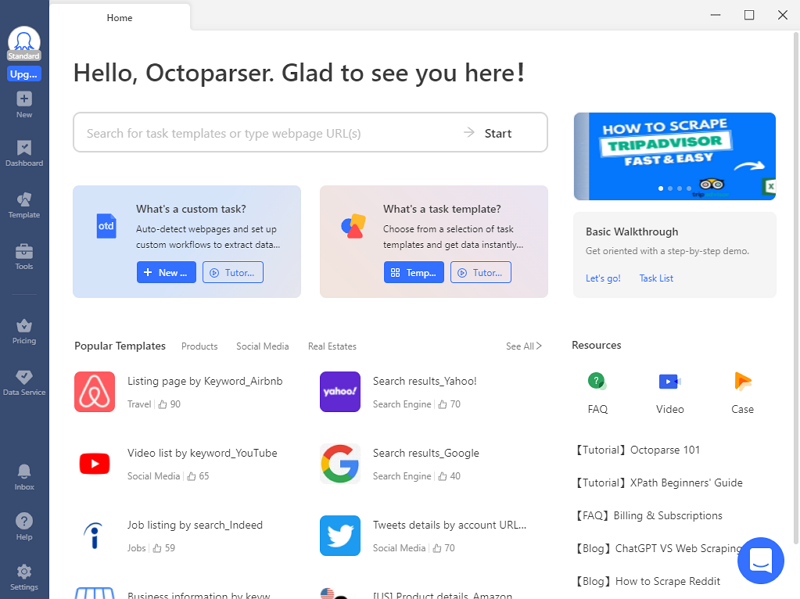Shopify is a leading e-commerce platform for individuals and companies to build online stores and sell their products or services. Approximately 4.88 million e-commerce sites are built on Shopify, and it is used by online sellers in over 175 countries worldwide in 2023, based on data from Builtwith.com. These facts show how competitive the e-commerce market might be. Establishing a Shopify store is just the beginning. Making it a successful store requires careful planning, execution, and ongoing optimization. In this post, we’ll list the TOP ten Shopify marketing strategies that your online business can benefit from.
TOP 10 Shopify Marketing Tips
The proper Shopify marketing strategies can help boost your online store’s visibility, engagement, and sales. Here are ten tips to help you make a more effective marketing strategy.
TOP 1: Optimize Your Store for SEO
SEO plays a far-reaching role in improving visibility and driving organic traffic to your Shopify store. To improve the SEO ranking for your store, you can:
- Make your product titles, descriptions, meta descriptions, and URLs descriptive and contain relevant keywords that potential customers might use to search for products like yours;
- Incorporate high-quality images of your products and use alt tags to provide descriptive text for search engines, enhance the accessibility and relevance of your product images;
- Regularly update website content, including blog posts and product descriptions, which can be signals to search engines that prove your site is active and relevant.
In addition, you can consider using web scraping techniques to optimize SEO further. Start by gathering data on competitors’ keywords, descriptions, images, etc., this data can provide valuable insights into market trends, keyword opportunities, and room for improvement, enabling you to refine your SEO strategy and stay ahead of the competition.
TOP 2: Leverage Email Marketing
Email marketing can significantly enhance customer engagement and drive sales for your Shopify store. To launch email marketing campaigns, you need a robust email list. Data in this list can be captured from sign-ups, purchases, or leads. Collecting leads can scale up the group receiving your marketing emails, reach more potential customers, and eventually extend your consumer base.
Building a lead generation database needs the help of web scraping. Tools like Octoparse now offer an easy way to pull email data from websites. Octoparse even provides preset templates, such as the Contact details scraper and the Email & social media links template, that can collect information like names, emails, social media profiles, etc., in bulk.
You can segment it with such data based on customer behavior, preferences, and purchase history. Then you can create targeted and personalized email campaigns to resonate with each segment of your audience. In addition to this, you can implement automated email sequences, such as cart abandonment reminders, welcome series, post-purchase follow-ups, etc., to nurture relationships with customers, re-engage inactive subscribers, and encourage repeat purchases.
TOP 3: Use Content Marketing
Writing a blog on your Shopify store or publishing articles related to your products can be a powerful strategy for building authority and driving organic traffic. Content like how-to guides, tutorials, and insightful stories are all valuable for your audience and can help you establish your brand as a knowledgeable and trusted resource in your niche. Regularly updating the blog with informative content is also an effective way to foster a deeper connection with potential customers and encourage them to engage with your brand. Eventually, content marketing will improve search engine ranking and drive more qualified traffic to your Shopify store.
TOP 4: Utilize Social Media
Social media is at the core of online marketing in the era of the Internet. It’s a perfect place to enhance brand visibility, engagement, and reach. Start by identifying the platforms where your target audience is most active, you can create a dynamic and interactive social media presence by sharing a mix of engaging content, including product highlights, behind-the-scenes looks at your business, user-generated content featuring satisfied customers, and exclusive promotion or offers, to resonate with your audience.
Meanwhile, you can consider running targeted social media ads to amplify your reach. For example, utilizing the advanced targeting options available on platforms like Facebook, Instagram, or TikTok can help you reach specific demographics, interests, or behaviors that align with your ideal customer profile. Effective social media ads can bring your Shopify store more traffic and generate leads or sales.
TOP 5: Offer Promotions and Limited-time Deals
Offering discounts and promotions can be a strategic approach to drive sales and attract new customers. Limited-time offers like flash sales or seasonal sales can create urgency and encourage potential customers to make a purchase. Bundle deals, where you package complementary products together at a discounted price, can also entice customers to increase their order value and explore more of what your store has to offer.
For existing customers, a loyalty program can be a good choice to engage them to support your store continuously. Whether the program is earning points for purchases, referring friends, or participating in exclusive events, a well-designed loyalty program can enhance customer retention and foster a sense of community around your brand.
Tips: To maximize profits, you need to find a balance between price and discounts. Monitoring prices on your competitors with web scraping can help you develop a smart pricing strategy.
TOP 6: Improve Customer Experience
Customer experience can be the determining factor in customers’ purchases. So, creating a positive and seamless shopping journey for visitors to your Shopify store is essential for boosting sales. Below are some tips to improve user experience and customer experience:
- Design your store with a clean and visually appealing layout that showcases your products effectively;
- Incorporate intuitive navigation menus, categorize products logically, and use clear calls-to-action (CTA) to guide visitors through the shopping process;
- Eliminate unnecessary steps, minimize form fields, and provide clear instructions;
- Add features like guest checkout, saved carts, or one-click purchasing to simplify the buying process and reduce cart abandonment rates;
- ensure your website is fully mobile-responsive, providing a seamless browsing and shopping experience across various devices and screen sizes
- Offering multiple payment options, including popular gateways and alternative methods;
- Provide clear return and exchange policies, offering hassle-free returns.
TOP 7: Encourage User-generated Content (UGC)
User-generated content (UGC) plays a vital role in building trust and credibility for your Shopify store. Traditionally, online sellers prefer customers to share their experiences through reviews, testimonials, or ratings on product pages. Positive reviews on the product pages can help prospective buyers make informed decisions and enhance the perceived value of your products.
In addition to traditional reviews, UGC on social media can further amplify your brand’s authenticity and engagement. By creating a branded hashtag on social media like Facebook, Twitter, and Instagram, you can run contests or giveaways, or offer incentives to motivate customers to create and share content featuring your products. After that, you can generate a steady stream of UGC that showcases your products in real-life scenarios, resonates with your target audience, and enhances your brand’s visibility and credibility on social media.
TOP 8: Monitor Competitors’ Prices
Understanding the market landscape is the key to long-term success. Tracking your competitors’ prices is a crucial step to achieving your business goal. With monitoring prices, you can make informed decisions and adjust product prices accordingly. That means you can make your products stay competitive within the industry, and maximize profitability. A data-driven pricing strategy also can help you identify opportunities and threats in the marketplace and make your products stand out from other items.
Thanks to the advanced web scraping tools, nowadays building a price tracker is easier than before. With the help of Octoparse, you can build a Shopify price tracker within clicks without the need to write a script. It offers you a solution to automatically track competitors’ prices and tell you the pricing trends or changes.
TOP 9: Collaborate with Influencers
Influencer marketing can be a powerful strategy to enhance brand awareness, reach a wider audience, and drive engagement for your Shopify store. Start by identifying influencers or micro-influencers in your niche whose values, audience, and content align with your brand and target audience. By collaborating with influencers who resonate with your brand’s ethos and target demographic, you can create authentic and relatable content that effectively communicates your brand message and compellingly showcases your products.
Also, you can consider hosting giveaways or contests in partnership with influencers to incentivize participation, increase brand visibility, and generate excitement around your products. By offering attractive prizes or exclusive discounts, you can encourage followers to engage with your brand, share your content, and potentially convert into customers.
TOP 10: Monitor and Analyze Performance
Regularly reviewing your Shopify analytics provides valuable insights into key metrics such as website traffic, conversion rates, sales performance, customer behavior, and more. By tracking these metrics consistently, you can gain a comprehensive understanding of your store’s performance, and identify pinpoint areas of strength and opportunities for growth.
- Utilize data-driven insights to evaluate the effectiveness of your marketing campaigns, assess the ROI of different channels, and make informed decisions about resource allocation.
- By analyzing performance data, identify which marketing strategies are driving results, optimize campaign targeting and messaging, and allocate budget and resources to the most profitable and high-performing channels.
Octoparse – Recommend Shopify Marketing Tool
A proper tool can help you make the most of the Shopify marketing strategies mentioned above. Octoparse is a web scraping tool that can contribute to your online business by providing you with up-to-date data in the market. Its advanced functions, like auto-detection and preset templates, simplify data extraction for anyone. You can apply it to build customized Shopify scraper based on your needs and proposes within clicks.
Download Octoparse for free now, and sign up for an account to start your Shopify scraping journey today. The data you grab with Octoparse will enhance your marketing campaigns, and eventually boost sales on your Shopify store.

Wrap Up
Because online markets are so competitive, marketing tactics are essential in establishing an online business. You can develop a compelling and trustworthy presence on Shopify by constantly responding to market changes, remaining knowledgeable about consumer behavior, and delivering outstanding customer service, eventually encouraging long-term success in the realm of online retail.




